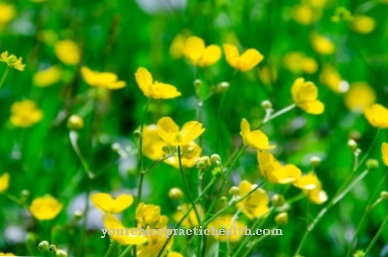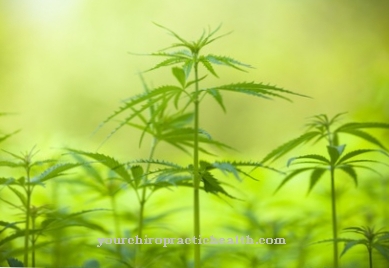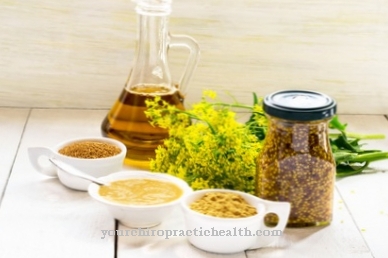Henna has been used to dye skin and hair for thousands of years. For women, red-coloring henna is particularly often used to decorate the body. Hair, toes, fingers, soles of hands and soles of the feet were already decorated with henna in ancient Egypt, as tomb finds show.
Occurrence & cultivation of henna

The henna plant belongs to the blood loosestrife family. The plant is a shrub and is between 2 and 6 meters high. The small white or pink flowers are dried and made into powder. This powder is used in many areas. Exactly where the henna comes from remains unknown. Henna used to be known by the name Real alcanna. There are also the following other names Mouthwood, Egyptian dye shrub or Egyptian dye herbs.
Effect & application
In the African, Oriental and Indian regions, the patterns of skin painting are very different. In India, henna painting relies on fine lines and delicate patterns that almost completely cover the feet, wrists and hands. Arab women prefer very large, eye-catching flowery patterns, and in North Africa, geometric patterns are very trendy. The technique of applying henna paintings to the skin developed over thousands of years.
In one technique, the pattern is applied through a stick and a mixture of ash and the juice of Euphoria peplus. Once the mixture is dry, the patterns are reinforced with henna paste and then redrawn. After that, the soles of the feet and the palms of the hands are painted with henna, with the joints of the toes and fingers being painted with a red dot. The color is obtained from the dried and powdered leaves of henna bushes. Lukewarm water is whisked into a paste and then applied to the skin. After several hours, a red color will remain on the skin. Color shades from various red tones to a very dark purple can be achieved - depending on how long the paste has been absorbed and how often it was applied.
Then the paint has to stay on the skin for a few hours before it is absorbed into the skin and can be removed. The painting remains in its full color for about a month and after about two months the color is completely off again. Henna is also used as a hair dye, it colors the hair permanently. The powder is mixed with boiling water and then stirred into a paste. The finished mass has a very distinctive smell. If the color stays in the hair for a long time, this mixture must be absorbed for up to three hours.
Importance for health, treatment & prevention
Henna tattoos in particular have a very high allergenic risk because of the potential component in PPD. Because if a tattoo is applied to the skin and stays there for a while, the substance can get stuck in the skin. This can lead to swelling, painful reddening of the skin or itching. Most of the time, these skin reactions develop within two to ten days. There are even open wounds, which then heal very slowly.
This can result in scars, color disorders or skin sensitivity to light. Anyone who is affected once is sensitized to PPD for the rest of their lives. The problem is that this artificial color is found in a wide variety of products. And if you are allergic to PPD or its breakdown products, you will probably have to do without a lot of hair coloring agents.
It can also happen that those affected have to avoid handling dark textiles and various plastics. It can also happen that the allergy spreads to other chemical substances. Then the quality of life of those affected is significantly reduced and psychological damage often remains. This skin damage because of a fun summer vacation is very stressful.
The henna plant has significantly more areas of application. For example, if you are nervous, a composition made from the henna plant with bark extracts is used. The powdered seed is ingested to stimulate cell formation. In addition, a paste is made from henna, which reduces sweat production. This paste is applied to the hands and feet and thereby cools the entire body.
Henna is not only used as a dye on the head, it is also effective for scalp problems such as dandruff and hair loss. It also protects against the dangerous UV rays. The brew filtered from the leaves of the bush has a healing effect on stomach pains, rheumatism and colds.
Women use this very often after giving birth to regulate their cycle more quickly. However, it should not be used during pregnancy or breastfeeding, and the same applies to children.



























